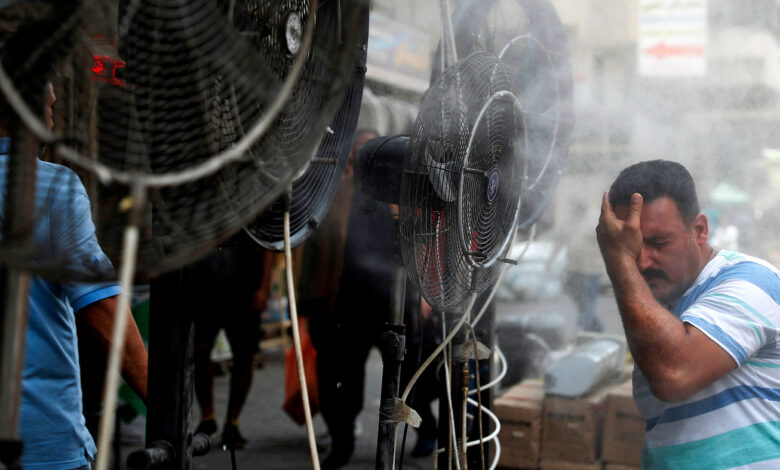
(CNN) – Two years ago, forecasters in the UK conducted an interesting thought experiment: What will our forecasts look like in 2050?
The climate crisis is pushing weather to the extreme all over the world, and temperatures in the northern latitudes have been particularly sensitive to these changes. So meteorologists at the UK Met Office — the official weather forecast agency for the UK — dove in to the super long-range climate models in the summer of 2020 to see what kind of temperatures they’d be forecasting in about three decades.
“Not actual weather forecast,” the Met Office’s graphics said. “Examples of plausible weather based on climate projections.”
Well, on Monday and Tuesday, the “plausible” becomes reality — 28 years early.
In 2020, the @metoffice produced a hypothetical weather forecast for 23 July 2050 based on UK climate projections.
Today, the forecast for Tuesday is shockingly almost identical for large parts of the country. pic.twitter.com/U5hQhZwoTi
— Dr Simon Lee (@SimonLeeWx) July 15, 2022
Simon Lee, an atmospheric scientist at Columbia University in New York, noted the striking similarity between the 2050 outlook and the forecast for early next week in the UK.
“Today, the forecast for Tuesday is shockingly almost identical for large parts of the country,” Simon tweeted, adding in a later post that “what is coming on Tuesday gives an insight into the future.”
In 30 years, this forecast will seem rather typical.
Temperatures are forecast to run 10 to 15 degrees warmer than normal early next week in the UK. Highs could approach 40 degrees Celsius (around 104 degrees Fahrenheit) for the first time — a prediction that prompted meteorologists there to issue a “red” heat warning for the first time ever.
To be clear, this would be truly record-breaking heat. The country’s hottest temperature ever measured was 38.7 degrees Celsius at the Cambridge Botanic Garden in 2019.
It’s also clearly a sign of how rapidly the climate crisis is altering our weather.
“We hoped we wouldn’t get to this situation,” the Met Office’s climate attribution scientist Nikos Christidis said in a statement. “Climate change has already influenced the likelihood of temperature extremes in the UK. The chances of seeing 40°C days in the UK could be as much as 10 times more likely in the current climate than under a natural climate unaffected by human influence.”
The chance of exceeding 40 degrees is “increasing rapidly,” Christidis said.
This is about more than a few uncomfortable days. Extreme heat is among the most deadly weather events — we just don’t tend to see it happening in the moment, when heat stroke and death are attributed to underlying conditions like heart illness or respiratory disease.
And recent reports would suggest no more than 5% of UK homes have air conditioning to help keep residents cool.
We saw a shockingly similar situation play out in the United States just last summer, when the Pacific Northwest was plagued with extreme heat for days. Hundreds of people died in that heatwave. Officials in British Columbia noted that more than 800 “excess deaths” occurred during the heat — deaths that were unexpected and far from the norm for that time of year.
Unlike flooding or wildfires destroying a town, the sense of urgency around a deadly heat wave is not so dramatic, said Kristie Ebi, a climate and health researcher at the University of Washington, underscoring that heat is a “silent killer.”
“When it’s hot outside, it’s just plain hot outside — and so it’s a relatively silent killer,” Ebi previously told CNN. “People are generally unaware and don’t think about the risks associated with these high temperatures.”
She also said that it’s important to understand that the climate is not like what it was even just a few years ago. The climate crisis is already affecting our lives today, and it will continue to hit the most vulnerable.
“We all look forward to the summer as we enjoy the warmer temperatures, but there are people who are at risk at higher temperatures,” she said. “As the climate continues to change or higher temperatures get higher than what we experienced when we were younger, people need to pay more attention, particularly to those around you.”
CNN’s Rachel Ramirez contributed reporting to this analysis.




